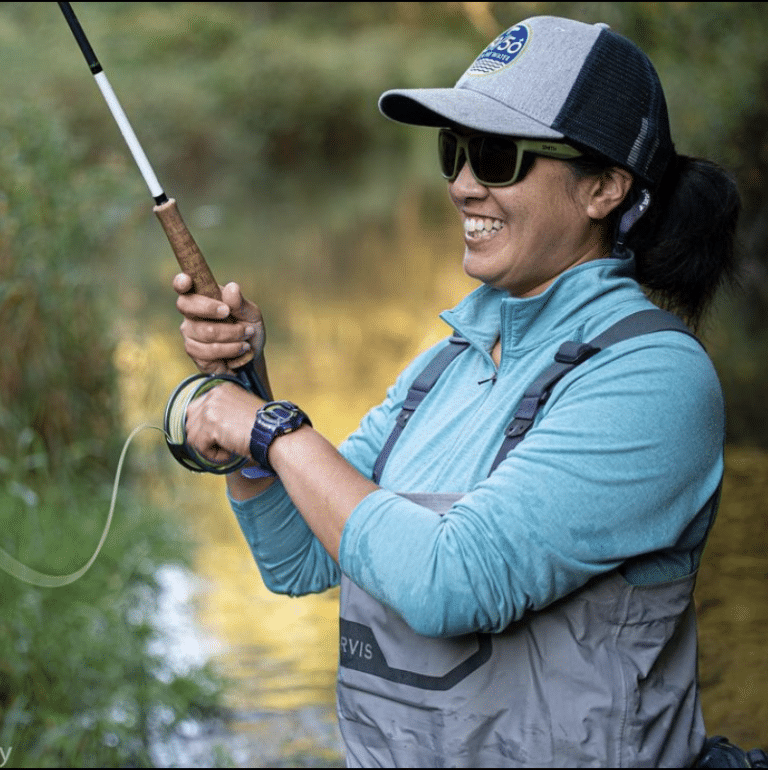Rule of Depth
There are several variables to consider to determine what depth to be fishing at. Water current speed, how much weight I have on my line whether that is split shot or size of the tungsten bead I am using, and my best guess estimate of water depth.
Weight of your rig + depth of your indicator + current speed = fish
1st Step - Determine weight of Fly to use
One of the keys to successful nymphing is to get your nymphs to depth as quickly as possible. With higher current speeds, I will generally go heavier with the weight I have on my rig. With slower current speeds, I will go lighter with the weight.
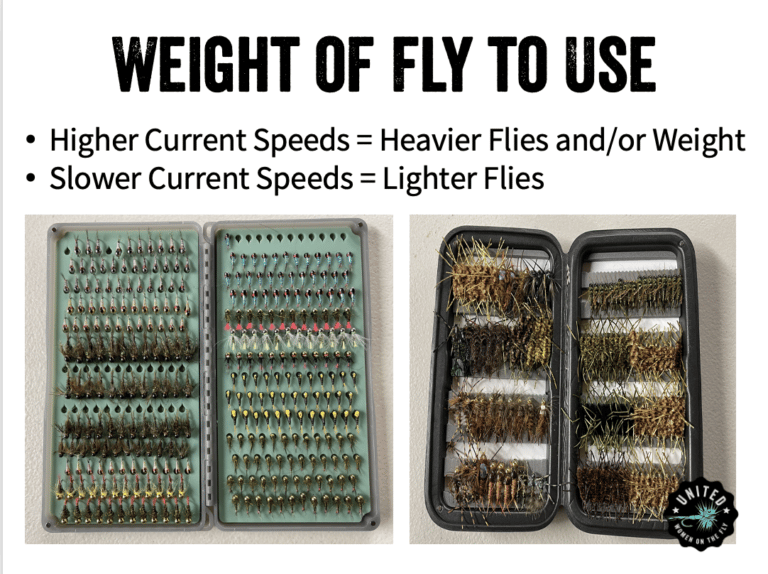
2nd Step - Pick a Depth
Once the weight of the fly is determined, I will then pick a depth to set my indicator at. If I feel the water depth is 4 feet, I will start at 3 feet of depth to be safe.
Typically I will make 3-4 casts and if I don’t get a bite or tick bottom, I will move my indicator 6 inches. I will repeat this cycle going deeper and deeper until I tick bottom or catch fish. If I never tick bottom, I will consider placing more weight on the rig, especially if I see that my strike indicator is moving at the same speed or faster than the surface current.
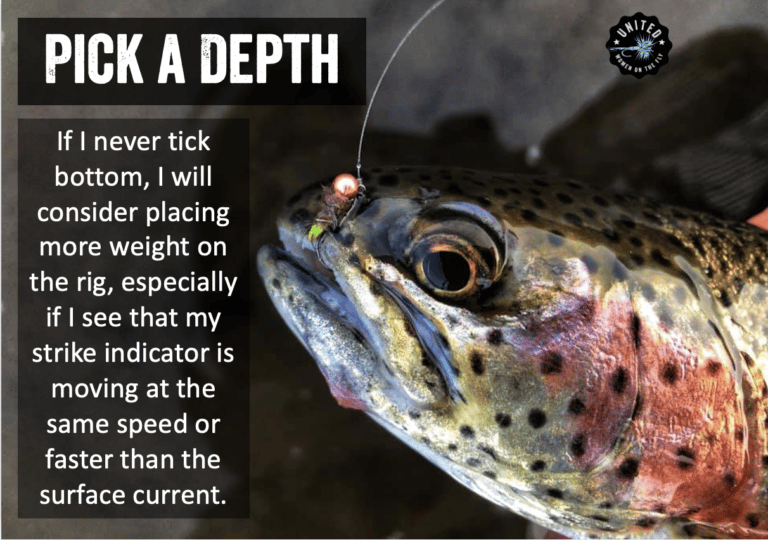
Bottom Current Moves Slower than top
Generally, I like to see my indicator moving just a little slower than the surface current. This gives me an indication that my nymph is now drifting near the bottom of the stream since the current near the bottom of the stream/river tends to move slower than at the top. Trout tend to reside just off the bottom of the stream.
Don’t be afraid or reluctant to make changes in the weight and/or depth of your rig.
Level Nymph Leader
If I know that I will be nymphing most of the day, I will use a nymphing level leader rather than a tapered leader.
The tippet below the indicator should be level. A level tippet sinks at the same rate along its entire length, whereas a tapered tippet section sinks unevenly due to the difference in diameters.
Thicker tippet sections (nylon or fluorocarbon) sink slower than thinner-diameter material. Thicker tippet will also be influenced by the current and create drag.
Nymph Level Leader: 12 inches of 20# mono + 12 inches of 15# mono to a tippet ring (optional) + 5-7 feet of 3X mono. If you need to go thinner with your tippet, I typically will use 5 feet of 3x + 3 feet of 4x or 5x mono.
This level leader does not cast as well as a taper leader. It’s also much easier to move a strike indicator along a level line than a tapered line. Your line won’t kink nearly as much.
Watch the June UWOTF Virtual Meeting Presentation on Summer Trout Fishing Tips on Approaching Trout with Stealth, Nymph Fishing with a Strike Indicator and Alaska Fishing Techniques. Co-Hosts – Anh Thai, Jenn Hsia and Jackie Bowman.
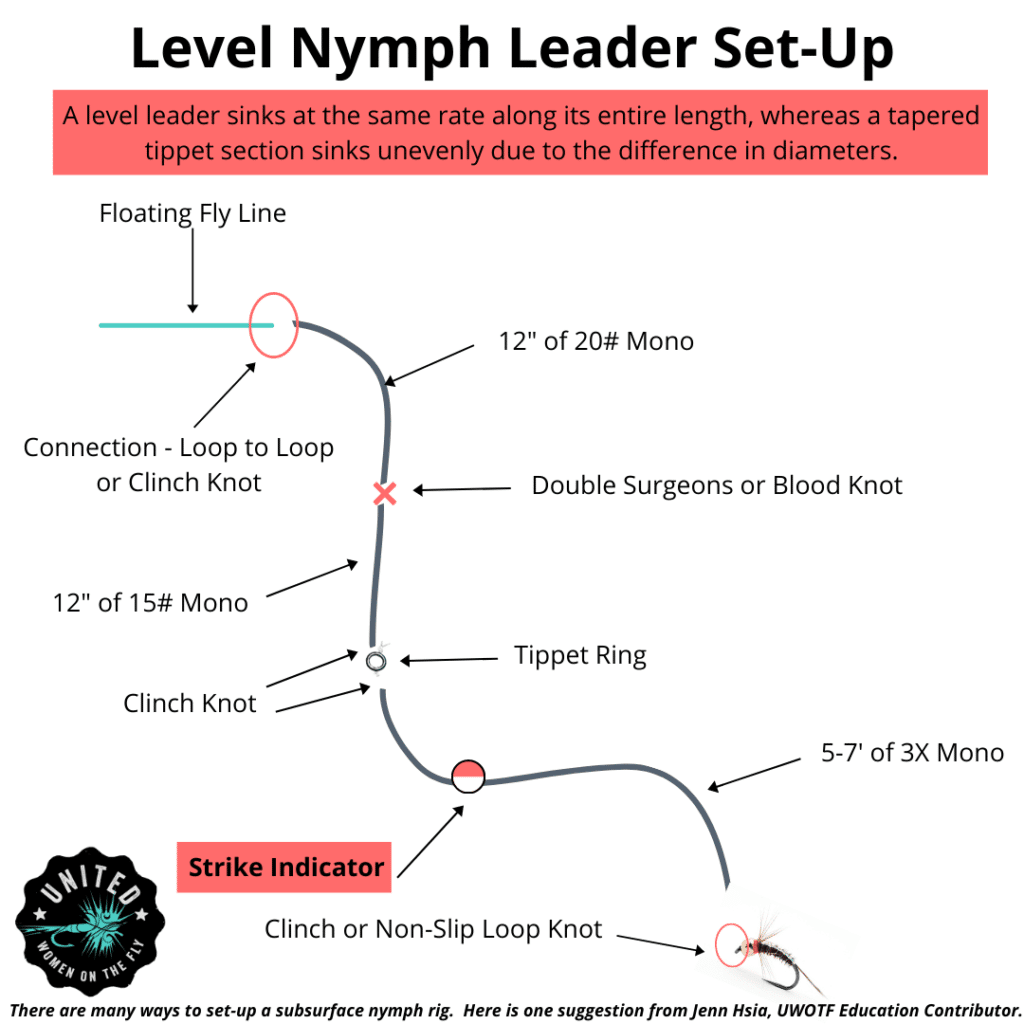
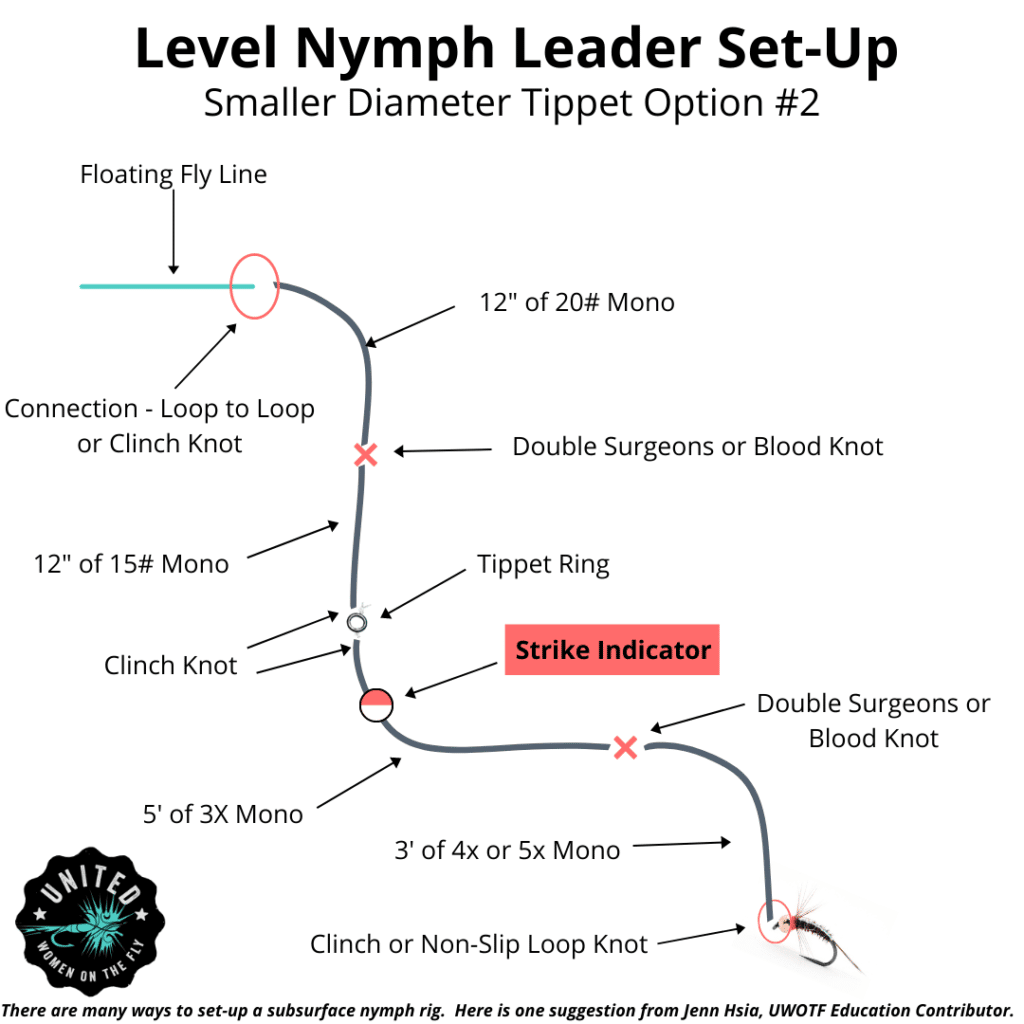
Connect with Jenn hSia
I am passionate and obsessed fly angler from the Twin Cities area of Minnesota. I found fly fishing relatively late in life – I started fly fishing as a way to explore the Minnesota outdoors more. It is the state of ten thousand lakes, after all. My first love is trout, but I have really come to enjoy targeting warm water species such as bass, pike, carp. My dream fish would be a musky on the fly!
I fish mostly in Minnesota, Wisconsin, and Iowa. I am excited about taking my first fly fishing trip to Utah this summer.
When I am not fishing, I work in healthcare. I enjoy travelling, hiking, and eating all the food!


